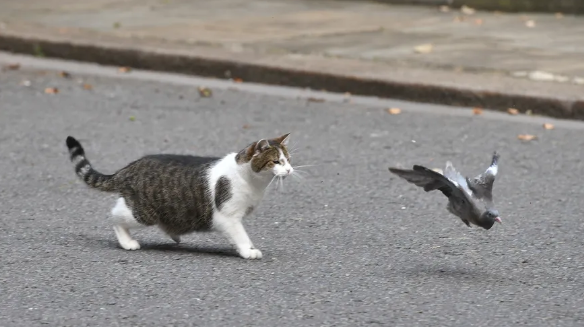While cats have been cherished companions to humans for thousands of years, it’s crucial not to overlook the threat they pose to our ecosystem. These seemingly innocent pets, with their natural hunting instincts, can be some of the fiercest predators on the local scale and are the root of numerous ecological issues.
In order to explore the disruptive impact cats have on many ecosystems, it’s essential to recognize how they benefit them. In some cases, cats can act as a natural predator, filling the niche that previous predators – most likely pushed out of their ecosystems due to external factors, like the introduction of invasive species, the settlement of humans, and so on – once filled. Cats contribute to the suppression of invasive species that might be destructive to local ecosystems. In addition, cats can positively impact human health due to their tendency to prey upon rodents and other pests. This helps prevent the spread of dangerous diseases, such as the hantavirus and Lyme disease.
Even with their benefits, the intrinsic hunting instinct of cats is one of their most glaring problems. Cats are natural-born predators, and as such they tend to prey on small mammals, reptiles, and birds. The predatory tendencies of cats can disrupt the food chain and in some cases contribute to the endangerment or extinction of key species. The American Bird Conservancy holds cats accountable for contributing “to the extinction of 63 species of birds, mammals, and reptiles in the wild,” and states that cats “continue to adversely impact a wide variety of other species, including those at risk of extinction.” Although numbers vary, it’s estimated that cats kill approximately 2.4 billion birds each year in the United States alone, making cats the most significant predator of birds.
Cats pose the greatest threats to isolated regions like islands. On the islands of Hawaii, cats are considered an invasive species with no natural predators. They have struck havoc upon the unique wildlife, further endangering already vulnerable species, and have also been a driving factor in the extinction of some species and subspecies of birds. Feral cats on the islands have been recorded killing protected birds and even newly hatched turtles.
Other issues can arise involving cats on the islands because they are the host of a parasite that damages the ecosystem. Toxoplasma gondii, which cats spread through their feces, is a parasite that can harm and kill wildlife. This parasite can spread to humans as well and potentially cause severe health problems.
The issue of feral, stray, and outdoor cats is significant, but there are many things we can do to prevent further damage. Unlike Australia’s plan of eradicating the population of cats, there are many ways to deal with them humanely. Because feral cats prove to be the most destructive to the ecosystem, Trap, Neuter, and Release (TNR) programs are used to slow down the rapidly growing populations of cats. Many outdoor cats hunt by instinct, and in doing so pose a severe threat to local wildlife. The best thing to do to prevent pet cats from killing wildlife is to keep them indoors.
In summary, the intricate relationship between cats and ecosystems calls for a nuanced approach. It is necessary to maintain a balance, as cats are both beneficial and detrimental to ecosystems. Embracing solutions to prevent cats from causing further harm is crucial, and only through these measures can we harmonize our affection for these animals with the preservation of our delicate environment.


Mike • Oct 8, 2023 at 1:20 pm
This is a human problem, if humans did not abandon their cats, we would be in a better place.
Dee • Oct 6, 2023 at 9:57 pm
So, how do control these people that feed them and don’t spade n clip their ears. My neighbor feeds these stray cats and they keep having litters. These cats come on my property jump and pee on our cars. Leave loose feces in our yard. I have too shoot it down with water because I have house dogs that walk on the grass possibly tracking it in the home. We also have to deal with fleas they bring in our yard. What the heck we supposed to do about this problem. I’m not the only person dealing with this problem! It’s disgusting having to deal with these feral cats. Dogs have a no leash law, why not for cats. What’s the solution here!
Kamu Gonzales • Oct 6, 2023 at 7:01 pm
Humans are behind why so many feral cats…feral cats DID NOT choose to become strays/feral!!!